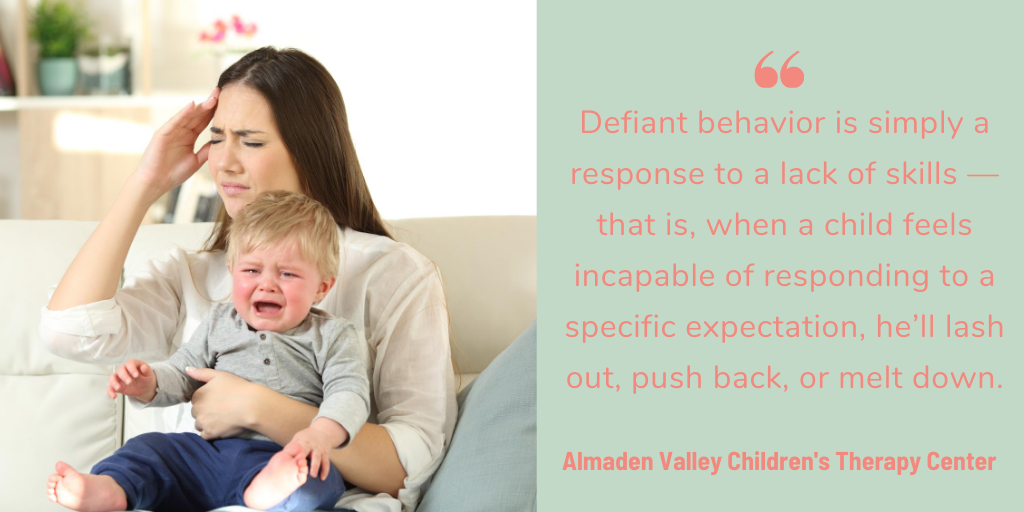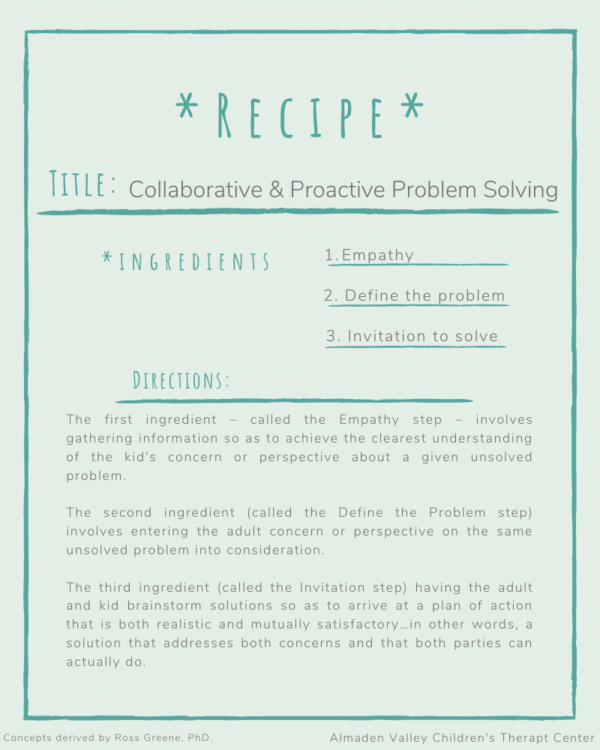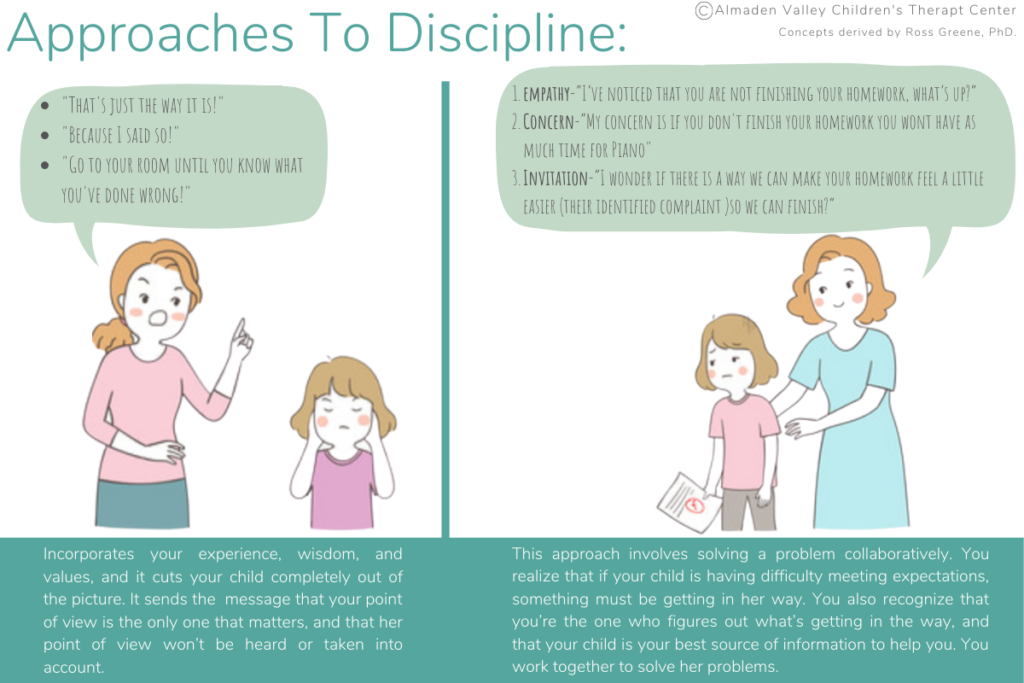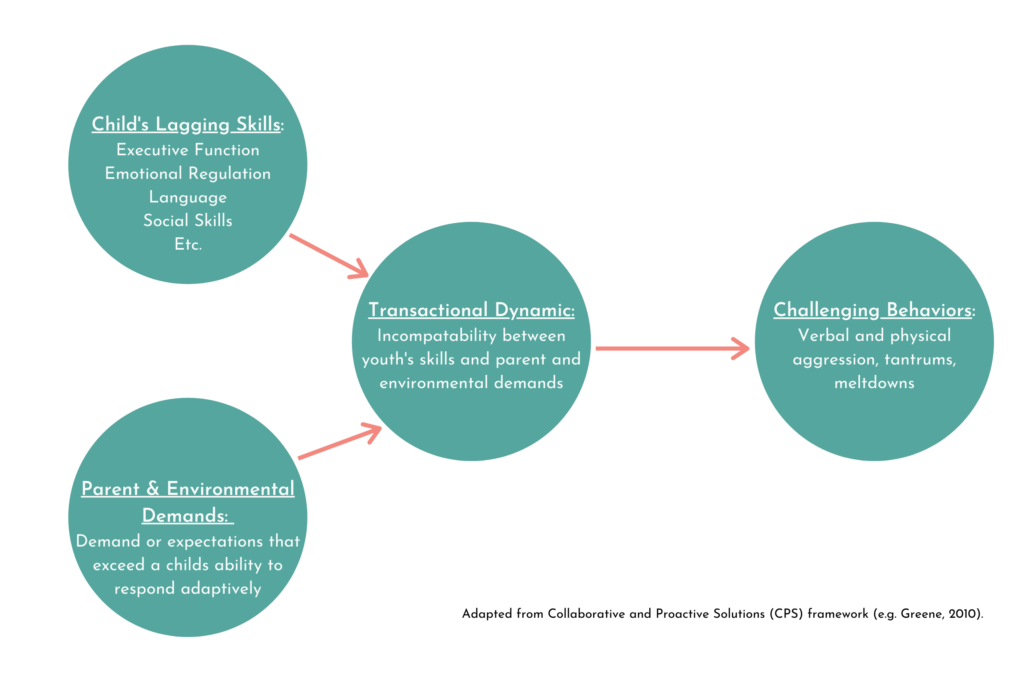In this post I will be highlighting a variety of approaches we believe are incredibly effective for managing challenging behaviors. In one of my first jobs out of Occupational Therapy school my mentor and supervisor (thanks Elisa!) at the time pointed me to Dr. Ross Greene, specifically his book titled “The Explosive Child”. I was eager to soak up as much information as I could as a newly licensed therapist so I dug right in. Reading that book planted a foundation for how I have worked with all children since – not just children with diagnoses like Oppositional Defiant Disorder – because let’s face it..at one time or another all children display “challenging behaviors.”
A few years into my OT career I stumbled upon the work of Dr Daniel Siegel and Dr Tina Payne Bryson, starting with “The Whole Brain Child” and later “The Yes Brain”. The entire time I was reading the book felt myself nodding and saying, “yes, exactly!” I felt like they put into words many of the ideas and approaches we use to successfully work with children who have challenging behaviors.
In this post I am going to introduce you to their work and the concepts that can be utilized to successfully work with your child when they are struggling the most.
ROSS W. GREENE, PH.D.
Dr. Greene is the author of many well-known books on managing difficult behaviors and is the originator of a model of care emphasizing collaborative resolutions to the problems contributing to children’s behavioral challenges. He is also associate clinical professor in the Department of Psychiatry at Harvard Medical School.
One of the things that I always keep in mind when working with a child or addressing challenging behaviors is a concept Greene wrote about which is: “Children Do Well When They Can.” While this sounds simple, trust me it is not. What this short statement means is that there aren’t “bad children” – there are simply children who do not possess a specific skill necessary to do what they are expected to do at any given time. You can see from the image below that when children have what Greene coined as a “lagging skill” and a parent or their environment presents them with a demand that is incompatible with their current abilities, a challenging behavior will ensue.
When I considered “challenging behaviors” from this lens, I must tell you that it freed me up to be able to approach a difficult situation from compassion and support rather than from my own primitive brain. Instead of going to the place of, “this kid is a brat” or “I must be a terrible therapist” or “this child is trying to push my buttons” it is much easier for me to remain calm, neutral and curious on how I can help the child obtain the skills they need. When a child’s behaviors feel like an attack or a purposeful action of defiance, it would no doubt lead us to feel and respond with anger and annoyance. Defiant behavior is simply a response to a lack of skills — that is, when a child feels incapable of responding to a specific expectation, he’ll lash out, push back, or melt down. Greene says that “Explosive children lack important cognitive skills” (and I would argue that all children lack cognitive skills necessary for successfully navigating the challenges presented to them daily). The most common skills that children are lacking are flexibility/adaptability, frustration tolerance, and problem solving.

Greene suggests focusing on the skills that a child is lacking, and the expectations that are frustrating him, rather than on the negative behaviors themselves. Working together to solve the problem is the most effective way for long term improvements. Greene outlines the steps to his collaborative and proactive problem solving approach as: 1) empathy, 2) define the problem, and 3) invitation to solve.

Greene emphasizes a shift from “power and control to collaboration and problem solving”. When we use Greene’s approach not only do we create more peace in our homes, we are actively teaching our children critical skills they will need in order to navigate life’s future challenges.

Daniel Siegel and Tina Payne Bryson
As mentioned above, Dr. Siegel and Dr. Payne Bryson are my child development spirit animals. When I read their work – all of it – I always feel like EVERYONE needs to know what they have to teach. This post will barely scratch the surface of what they have to share and I highly recommend just picking up their books and reading them for yourself. I promise you will love it!
In the “Whole Brain Child” the authors explain how children’s developing brains work which can be very helpful to understand. It is our job to help our children strengthen and integrate their right and left brain. To do this you can help your child use both their logical left brain and their emotional right brain so they can live balanced, meaningful, and creative lives full of connected relationships. In addition to integrating their left and right brain, children also require help with integration and strengthening their upper and lower brainstem. The upper brainstem is responsible for analytical and more sophisticated thinking and is typically not fully developed in children or adolescence. On the contrary, the lower brainstem which is responsible for primitive and reactive responses, is intact at birth. Siegel and Payne-Bryson describe how our upper brainstem is vulnerable to being “hi-jacked” by the primitive brain when we are facing times of stress and overwhelm – this occurs in adults as well.
Strategies to Integrate Left & Right Brain and Upper & Lower Brainstem










